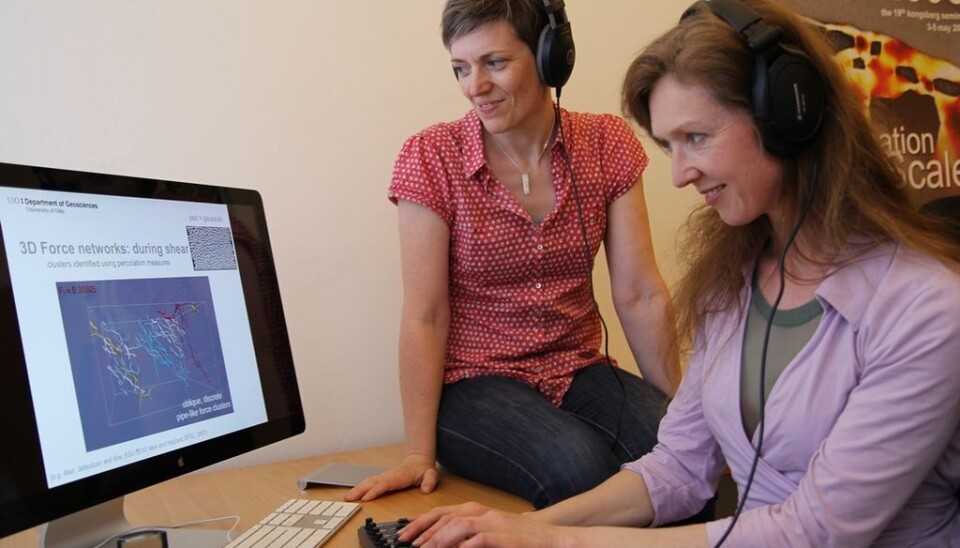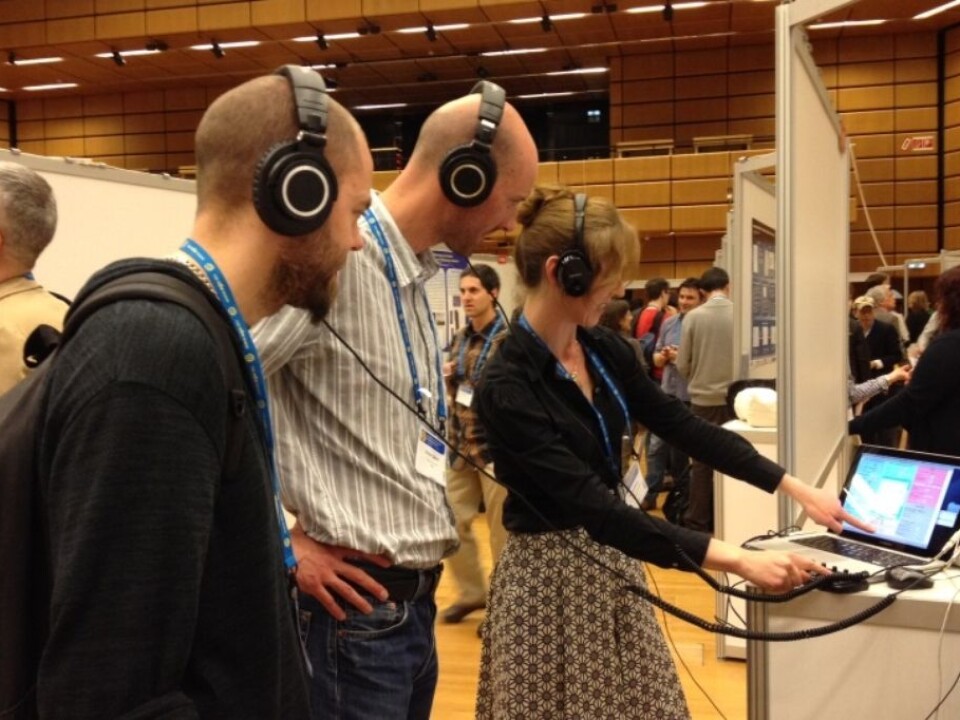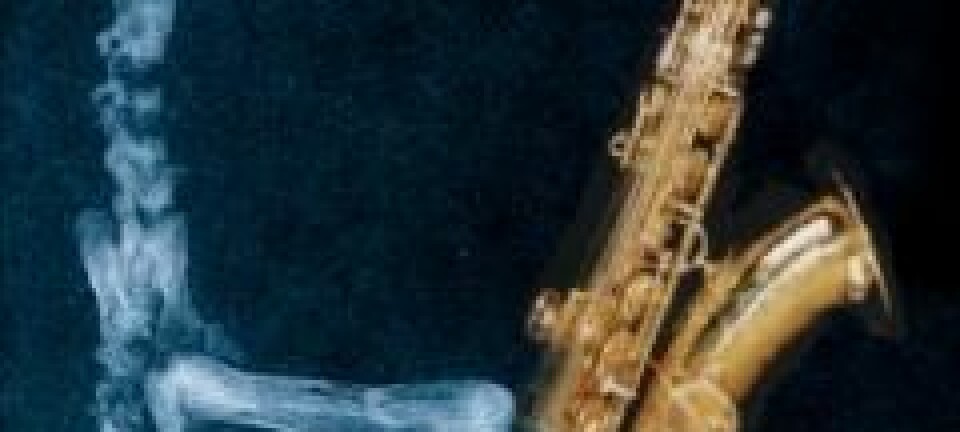An article from University of Oslo

The music of earthquakes
Guess what happens when you introduce a composer to a geologist.
Denne artikkelen er over ti år gammel og kan inneholde utdatert informasjon.
The award-winning composer Natasha Barrett has long been fascinated by the sounds of nature. She has previously used meteorological data and water in her compositions.
She thought that the sounds caused by crushing stones could be something to use in her art.
Digging deeper
“I wanted to explore in depth these types of sounds and the processes that create them, hoping to find something I could use artistically,” Barrett says.
In 2009, Barrett contacted PGP (centre for Physics of Geological Processes) at the University of Oslo where she was introduced to geologist Karen Mair. Mair quickly became interested in the project.

Together they analyzed the sounds that occur when rocks are crushed in the laboratory to produce mini-earthquakes and also computer models of ‘breaking up’ or fragmentation processes, which is Mair’s specialty.
Much of the activity going on inside broken rocks or earthquakes can’t be heard by the human ear. When a machine crushes a rock in the laboratory, very high-frequency sounds will occur, whereas an earthquake creates much lower frequency sounds. Using a transposition technique, the duo adjusted the frequencies so that they were possible to hear.
Processes and patterns
“By applying sonification, a process in which raw scientific data becomes sound instead of being visualized, we found interesting audible processes and patterns. That is exactly what music is all about: processes and patterns. These can be used creatively in new sound art and music,” says Barrett enthusiastically.
With the results she developed sound art installations exhibited in 2011 at Gallery ROM and at the Norwegian Science Museum in Oslo. In the exhibitions, visitors could move around the room exploring the soundscape, listening from ‘inside’ the crushing rock in 3D. The sound was distinct at different locations and evolved with time. In some places it was low and rumbling, in other places brief and punctuated, elsewhere, strong and cutting.
“Instead of traditional instruments it’s crushing rock that makes the voices of the orchestra, assisted by modern technology,” Barrett says.
Secrets of the data
Since Mair discovered that listening could reveal exciting new aspects of the data, the research cooperation has entered a new phase. In particular, it can show subtle differences between advanced 3D computer models and laboratory experiments that are trying to simulate the same processes. Mair and Barrett are exploring the secrets of these data.
“The sounds can help us gain new knowledge about how well we can simulate different geological conditions in our computer models and experiments,” Mair says.
“There is an enormous amount of internal activity when the rocks fragment, and there's a lot about this researchers still do not understand.”
Now they hope that sonification will help to cast light on some of these mysteries.
New fault zone
“Work with sonification has created new ways to explore fragmenting fault zones and ultimately earthquakes,” says Mair.
A fault zone is where the two parts of the crust move relative to each other, often generating granular debris as the rough walls grind against each other. This is exactly what happens during an earthquake.
“We usually analyse our scientific data on plots and graphs, but there is substantial information that can also be portrayed as sound. Because our hearing is sensitive in a different way to our vision, sound may reveal information that we can’t easily see. Now we listen through our recent fault simulations to capture ‘the whispers and shouts’ that our eyes have not discovered,” Mair says.
International attention
This unique partnership has also created considerable international interest. The duo has presented their recent PGP supported work at several geoscience conferences around the world, most recently in late April at the European Geoscience Union Conference in Vienna. Besides seeing opportunities for new geological discoveries, Barrett also hopes to discover even more exciting musical materials.
Aftershock (2011), Gallery ROM, Oslo. Short documentation video. (Vimeo video)
Crush-3 video improvisation (2011). Binaural audio for headphones. (Vimeo video)
------------
Read the Norwegian version of this article at forskning.no

































